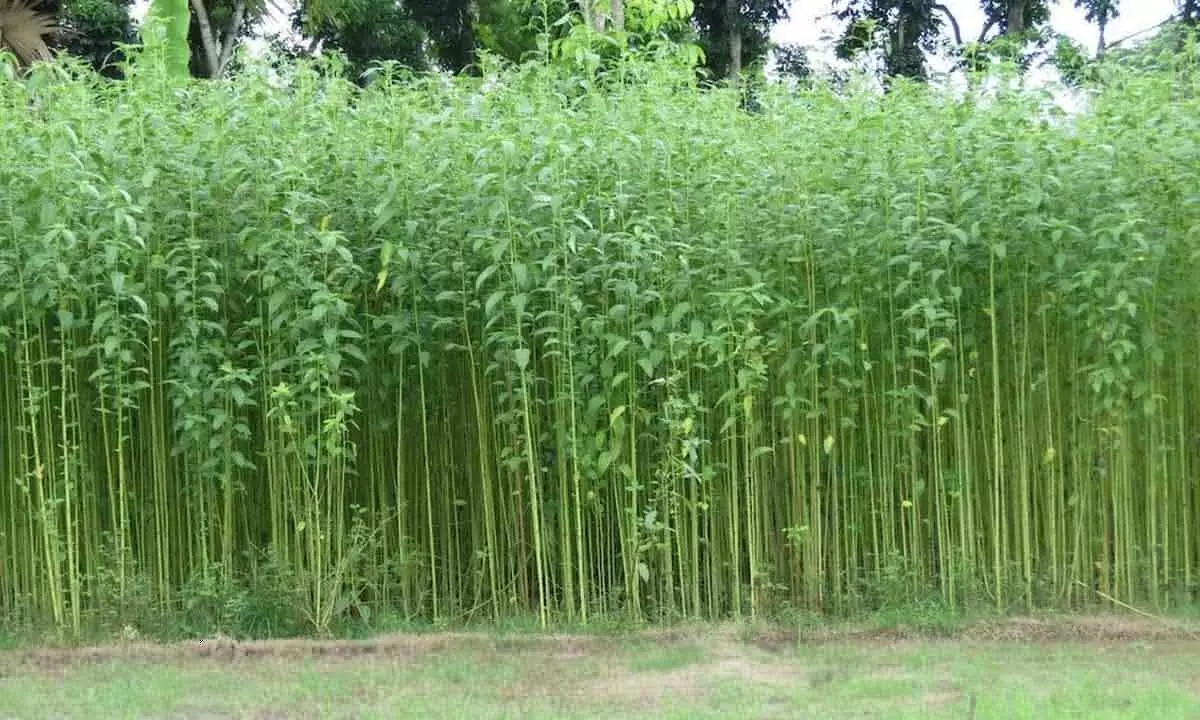Increasing, spreading jute cultivation need of the hour
Production of jute, often billed as the golden fiber, in India has fallen by over 13 per cent in the past decade - 1.77 million tonnes in 2021-22, from 2.03 million tonnes in 2011-12 - according the third advanced estimates released by the Union Ministry of Agriculture and Farmers Welfare in May 2022
image for illustrative purpose

Production of jute, often billed as the golden fiber, in India has fallen by over 13 per cent in the past decade - 1.77 million tonnes in 2021-22, from 2.03 million tonnes in 2011-12 - according the third advanced estimates released by the Union Ministry of Agriculture and Farmers Welfare in May 2022. The same is the case with land under the cash crop. The average area under jute in the country was 0.82 million hectares between 2000-01 and 2009-10, according to a 2021 report by the Commission for Agricultural Costs and Prices (CACP). This declined to 0.73 million ha between 2010-11 and 2019-20. In West Bengal - the country's largest jute-producing State, which also has 70 of India's 93 jute mills. The area under jute has reduced by 0.1 million ha between 2009-10 and 2020-21.
Significantly, while India's production and acreage declined, Bangladesh's production and area under jute has increased over the years. India is still the largest producer of jute but in terms of acreage, Bangladesh is the largest cultivator. It also accounts for nearly 75 per cent of the global jute exports, while India's share is just 7 per cent, according to the CACP report.
The government certainly needs to look at these comparative figures and try and do something about it, but what causes more concern and headache for the power-that-be is the increasing shortfall between demand and supply of jute bags, caused by the falling area under cultivation. Mind you that the production of raw jute and the presence of mills is primarily concentrated in the eastern region of India- Bengal, Bihar and Odisha and Assam, resulting in huge costs of transportation of bags to the rest of the country. This is because the bags are primarily required in the packaging of food grains in the northern States such as Punjab and Haryana.
Rising to the occasion, the Centre has already started exploring the possibility of growing raw jute beyond the eastern States to cover the shortfall between demand and supply of bags and reduce logistics costs. In fact, the Department of Food and Public Distribution, under the Union Ministry of Consumer Affairs, Food and Public Distribution, has sought suggestions from the Directorate of Jute Development, under the Union ministry of agriculture and farmers welfare, on the varieties and yields of raw jute and its spatial distribution, to move in this direction.
One has to keep in mind that jute sacking bags make up around 75 per cent of the production of the industry, of which 90 per cent is supplied to the Food Corporation of India (FCI) and the State procuring agencies. The government is the biggest customer, purchasing jute sacking bags worth around Rs 8,000 crore every year. The problem is caused by the fact that against a requirement of around 50 lakh bales, the average production of jute sacking bags is 30 lakh bales and the food ministry is finding that eastern India is unable to give the full supply.
Therefore, while the Centre is examining the feasibility of developing and encouraging the cultivation of varieties of jute in other parts of the country, particularly in North India, where there is a requirement for jute bags, and various research works are underway to explore the viability of an alternative variety of jute seeds, the States in eastern India, on their parts, must look at ways to step up jute cultivation.

